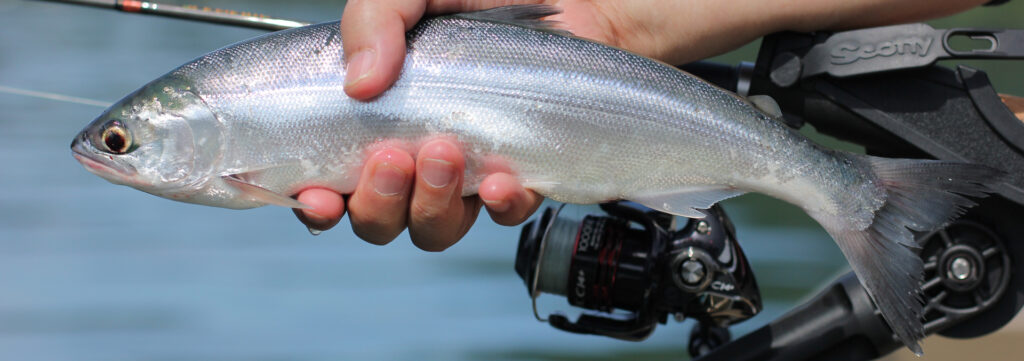While the rainbow trout fishing in Interior lakes and rivers is second to none, the kokanee fishery is another to consider, especially during the hot summer months. This exciting fishery has been popular for a number of years, and with new management strategies and stocking programs, it is starting to flourish and expand to other regions of B.C. Here are my top tips on where to find kokanee salmon, their food sources, and lake-trolling setup and techniques.

Kokanee Food Sources
The kokanee is unique. It is actually a descendant of anadromous (sea-going) sockeye salmon, but once it has residualized in freshwater, it is known as a kokanee. Some kokanee populations occur naturally in lakes that have, or have had, connections to sockeye that migrate through them. Others have been stocked, on the recommendations of regional biologists, by the Freshwater Fisheries Society of BC.
Kokanee need special conditions to flourish in lakes, the main ingredient being zooplankton. This is not only a valuable nutrient for freshwater invertebrates, but the kokanee’s main food source. Combining this with an optimum growing habitat, which several Interior lakes can provide, may result in kokanee weighing two kilograms or more. This alone will be a big draw for many anglers. Add to this the fact they are one of the tastiest game fish, and you can see why they are a popular species to target.

Where to Find Kokanee Salmon
A large number of Interior lakes have healthy kokanee populations. Some consistent producers of hefty kokanee include Big and Little Deka, Bridge, Sulphurous, Hathaway, Stump, Horse, Ruth, Purden, and Monte lakes. All are deep enough to have a thermocline, which is the transition layer between the warmer mixed water at the surface and the cooler deep water below. This gives kokanee a zone of cool comfort during the hottest days of summer, and makes them prime candidates for trolling.
When gearing up for trolling, it is useful to have a good depthsounder (fish finder). Since kokanee are a schooling fish, the ability to locate them and pinpoint their depth is crucial. Downriggers (electric or manual) will increase your odds of hooking up, but leadcore lines, or just standard trolling gear are also quite effective.
Our interactive Where to Fish map provides information on over 800 lakes stocked for recreational fishing, including depths for some lakes. Print or save a copy of the depth map so that you can see where the deeper areas of the lake are, and where the kokanee may be schooling.

Lures, Spoons and Bait: Trolling for Kokanee
Use lures like one-inch orange or red Hildebrandt spoons; Apex Kokanee Specials; red Gibbs-Delta Wedding Band spinners; small orange or pink hootchies (with your hook tipped with fire corn, krill, maggots, or shrimp); or small (size 12 to 14) pink or orange Spin-n-Glos.
Dabbing various types of krill- or shrimp-based scents onto your lure will also increase your chances. Troll your lure about 30 centimetres behind flashy attractors like Ford Fenders, micro or eight-inch Hot Spot flashers, #1 size dodgers, or small willow leaf gang trolls.

Pictured above:
- Ford Fender lake troll: When trolled, the blades act as attractors; the kokanee follow the sound and flash to the source, spot the trailing lure and attack it.
- Pink Hootchie: mimics the kokanee’s food source and acts as an attractant.
Try to be as observant as you can. Constantly monitor your depthsounder, and watch other anglers to see how well they are doing and where. If you notice a lot of fish at a certain depth (especially if they are really tightly schooled), stop and work that depth with a one- or two-inch Buzz Bomb or other small drift-jig or, alternatively, mooch around the school with a krill- or shrimp-baited small hook – you could be pleasantly surprised.
With all fishing, be patient, and use fishing etiquette when near other anglers. Be sure to check the freshwater fishing regulations for gear and limit restrictions on the lake you are fishing. Remember that you are angling for one of the tastiest fish in Interior lakes – enjoy!
Author: Nick Basok, Freshwater Fisheries Society of BC Fishing Advisor
Photo Credit: Nick Basok; Freshwater Fisheries Society of BC Staff
